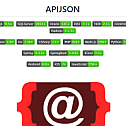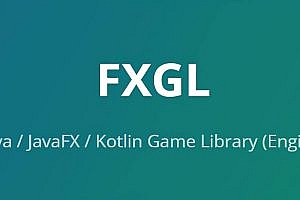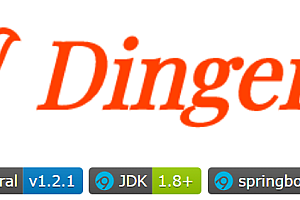This issue recommends a Tencent open source ORM library – APIJSON.

APIJSON is a JSON network transport protocol for apis and an ORM library based on this protocol.
provides a fully automated universal interface for various additions, deleations, corrections and checks, and zero code meets the ever-changing needs of various additions and changes in real time.
can significantly reduce the development and communication costs, simplify the development process, shorten the development cycle.
Suitable for small and medium-sized back-end separation projects, especially start-up projects, internal projects, low code/zero code, small programs, BaaS, Serverless, etc.
Through the universal interface, the front end can customize any data, any structure.
The back end of most HTTP requests no longer has to write interfaces, let alone documents.
The front end no longer has to communicate with the back end about interface or documentation issues. No more documentation errors.
The back end no longer has to write new interfaces and documentation to be compatible with old interfaces. No more being constantly annoyed by the front end.
Features
For back end
- Provides a universal interface, most HTTP apis do not need to write
- Zero code increase, deletion, correction, various cross-library table, multi-layer nested sub-query, etc.
- Automatic document generation, no more writing and maintenance, and automatic static check
- Automatic verification of permissions, automatic version management, automatic anti-SQL injection
- Open HTTP API without versioning, always compatible
For front end
- No need to push the interface back and seek the document
- Fully customized data and structure, whatever you want
- See the request to know the result, what you want is what you get
- Can get any data, any structure at once
- Can remove excess data, save traffic and improve speed
Interface display
Postman show APIJSON

APIAuto Display APIJSON
Using APIAuto- Machine learning interface tools to manage and test HTTP apis can significantly reduce reference errors and improve the efficiency of connection
Note: The web tool interface is APIAuto, and the URL+JSON inside is the HTTP API of APIJSON
- APIJSON multi-table associated query, free combination of structures, APIAuto multiple test accounts, one-click sharing of test cases


- APIAuto automatically generates front-end (client) request code and Python test case code, one-click download

- APIAuto automatically saves request records, automatically generates interface documents, can add common requests, quick view one-click recovery

- APIAuto one-click automatic interface regression testing, no need to write any code (comments, comments, etc.)

- A picture is worth a thousand words – APIJSON Overview of some basic functions


APIJSON App presentation
Android client Demo developed using APIJSON + ZBLibrary (the following Gif looks more card, actually runs very smoothly) :

Why choose APIJSON?
- Solve the ten pain points (can help the front and back end development greatly boost the development efficiency, strongly eliminate the joint regulation, cleverly avoid document defects, very save traffic bandwidth, etc.)
- Development speed is very large (CRUD zero code hot update automatic, APIJSONBoot compared with SSM, SSH and other conservative estimates can speed up more than 20 times)
- Tencent official open source (using the official accounts of GitHub, Gitee, worker bee and other platforms open source, wechat public account, Tencent cloud + community and other official announcements)
- Great community influence (GitHub 1W+ Star ranks the top 120 among 350W Java projects, far exceeding FLAG, BAT and most other open source projects at home and abroad)
- Diverse user cases (Tencent internal users include mutual entertainment, music, cloud and wisdom, external users include Top 500 listed companies, hundreds of billions of capital state-owned enterprises, etc.)
- Wide range of application scenarios (social chat, reading information, audio-visual videos, office learning and other apps, websites, public accounts, small programs and other non-financial projects)
- Abundant surrounding ecology (Android, iOS, Web and other demos, inherit JSON massive ecology, zero code interface testing and unit testing tools, etc.)
- Complete documentation and videos (project introduction, quick start, installation and deployment, back-end, front-end, client graphic commentary, video tutorials, code comments, etc.)
- Rich and powerful (add, delete, change and check, paging sort, group aggregation, all kinds of conditions, all kinds of JOIN, all kinds of seed query, cross-library link table and other zero code implementation)
- Safe and easy to use (automatic add, delete, modify, automatically generate documents, automatically manage versions, automatically control permissions, automatically verify parameters, automatically prevent SQL injection, etc.)
- Flexibly customize services (Write remote functions at the back end, you can get session, version, current JSON object, etc., and then customize processing)
- High quality and reliable code (strict code, commercial analysis software source Umbrella Pinpoint code scan report average Bug rate per line of code as low as 0.15%)
- Compatible with various projects (the protocol is not limited to HTTP, no conflict with other libraries, integration friendly to various Web frameworks and provides SpringBoot and JFinal examples)
- Lightweight project (only relies on fastjson, Jar only 280KB, Java file only 59 total 13719 lines of code, e.g. APIJSONORM 4.3.1)
- years of continuous iteration (Since the open source in 2016, it has been maintained for more than 5 years, accumulating 2000+ Commits, 80+ Releases, and constantly updating in iterations…)

—END—
Open Source protocol: Apache2.0











